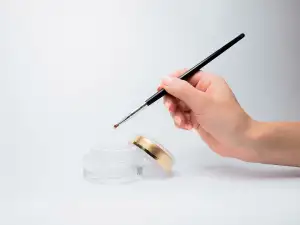Can Laser Hair Removal Cause Ingrown Hairs? Exploring the Health Implications

- Explanation of ingrown hairs and how they occur in the hair removal process.
- Discussion on the potential link between laser hair removal and ingrown hairs.
- Factors that may increase the risk of developing ingrown hairs post-laser hair removal.
- Tips to prevent and manage ingrown hairs after undergoing laser hair removal treatment.
Laser hair removal is a popular cosmetic procedure that uses concentrated light beams to target and destroy hair follicles, leading to long-term reduction in hair growth. This method is favored for its effectiveness in achieving smooth skin and reducing the need for frequent shaving or waxing. Many individuals opt for laser hair removal to address unwanted hair on various body areas, including the face, legs, underarms, and bikini line. The treatment is known for its precision and ability to selectively target dark, coarse hairs while leaving the surrounding skin undamaged.
Explanation of ingrown hairs and how they occur in the hair removal process.
Ingrown hairs occur when the hair follicle becomes trapped beneath the skin, leading to inflammation and possible infection. During laser hair removal, the heat from the laser can sometimes cause damage to the hair follicle, altering the way hair grows back. This can result in hairs growing sideways or curling back into the skin instead of growing out normally, leading to ingrown hairs. It is essential to understand how ingrown hairs form to effectively prevent and manage them post-laser hair removal treatment.
Discussion on the potential link between laser hair removal and ingrown hairs.
Laser hair removal can potentially lead to ingrown hairs due to the nature of the treatment. As the laser targets hair follicles, it can sometimes cause irritation or inflammation in the skin, leading to hairs growing back into the skin instead of outwards. This process can result in the formation of ingrown hairs, especially in individuals with curly or coarse hair types. It is essential to be aware of this potential risk when considering laser hair removal and take necessary precautions to prevent ingrown hairs from occurring.
Factors that may increase the risk of developing ingrown hairs post-laser hair removal.
Factors that may increase the risk of developing ingrown hairs post-laser hair removal include having curly or coarse hair, as these types of hair are more prone to curling back into the skin. Additionally, individuals with a history of ingrown hairs or those who have a tendency to develop them after other hair removal methods may be at a higher risk. Poor exfoliation habits can also contribute to the likelihood of ingrown hairs forming after laser treatment, as dead skin cells can block hair follicles and lead to ingrown hairs.
Tips to prevent and manage ingrown hairs after undergoing laser hair removal treatment.
Tips to prevent and manage ingrown hairs after laser hair removal include exfoliating the treated area gently to remove dead skin cells that can block hair follicles. Moisturizing regularly helps keep the skin hydrated and reduces friction that can lead to ingrown hairs. Avoid tight clothing that may irritate the skin post-treatment. Refrain from picking or scratching at ingrown hairs to prevent infection. If ingrown hairs persist, consult a dermatologist for proper treatment and advice tailored to your specific needs.
In conclusion, while laser hair removal is a popular method for long-term hair reduction, there is a potential risk of developing ingrown hairs post-treatment. It is crucial to consult with a dermatologist for personalized advice on how to prevent and manage ingrown hairs effectively. A dermatologist can provide tailored recommendations based on your skin type, hair growth patterns, and medical history to ensure the best outcomes from laser hair removal treatments. Prioritizing professional guidance can help minimize the risk of complications and maximize the benefits of this cosmetic procedure.
Published: 15. 03. 2024
Category: Health



